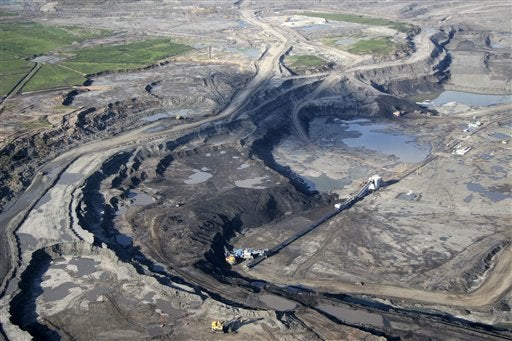
It's funny how it's taken the worst ecological disaster in U.S. history to suddenly make other forms of oil extraction and processing look green. Only months ago, the carbon trail from the massive planned expansion of tar sands production made Canada a pariah at the world environmental summit in Copenhagen. But now tar sands producers and others are promoting tar sands oil as an ecologically friendly alternative to the environmental risks of another deep-water oil spill.
How low the bar has fallen.
There's nothing clean about the production of synthetic oil from tar sands. The production of a single barrel of synthetic oil pollutes some 125 gallons of fresh water and emits over 200 pounds of carbon dioxide, principally as a result of the combustion of the natural gas, over 1,000 cubic feet of it, needed to generate the heat to separate the oil from the sand and then process it.
Currently, Canadian tar sands produce roughly one and a quarter million barrels per day, but the International Energy Agency (IEA) is projecting ultimate production at around 4 million barrels per day. Do the math on carbon emissions and water pollution, and you begin to get a sense of what has made the tar sands the most recent bête noire of the world environmental movement.
Perversely, these same tar sands may stand to benefit the most from what has happened in the Gulf of Mexico. It might seem odd that the world would turn to what is effectively a massive strip-mining project with a huge carbon emissions trail in response to spilling almost 40 million gallons of oil into the Gulf, but that's where the next leg of the global oil-supply curve lies these days.
Of course, the other problem with relying on the tar sands to replace deep-water production is cost. Even if tar sands producers don't have to pay for their CO emissions, or for the freshwater they pollute, they still have to pay for digging the oil out of the ground, heating it, and then processing the bitumen into a usable motor fuel. The very oil prices that are needed in order for tar sands to replace deep-water production are the same ones that will take millions of North American drivers right off the road.
Sure, when oil prices soared to $147 per barrel, there was more planned capital spending in the Alberta tar sands than in any other oil patch in the world. But when oil prices crashed during the recent recession, some $50 billion of planned capital spending was suddenly slashed overnight.
The tar sands aren't a greener alternative to deepwater oil. They're just a more expensive alternative. And the more that synthetic oil from tar sands replaces deep-water production, the more you'll pay to burn it.